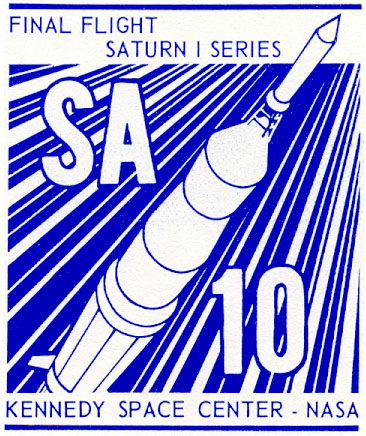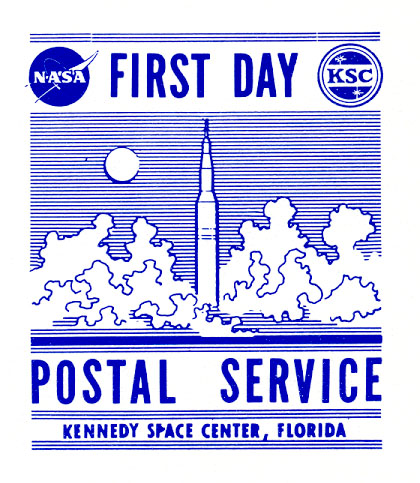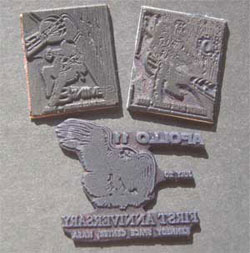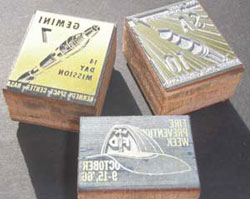Beginning in 1961 NASA began qualifying the cluster concept with the Saturn I rocket. Over a series of ten Saturn Apollo (SA) launches, Werner von Braun and his team from Marshall flew four Block I and six Block II birds.
Category: KSC Officials
Dr. Kurt Debus, the Center Director, opened the newly constructed Headquarters’ Building on May 26th, 1965. By the end of the summer, more than 1700 personnel would occupy the facility including a new post office which opened to the public on July, 1st 1965.
The KSC Post Office is considered a contract branch of the Orlando FL, Post Office; however, it was given its own zip code and an official stamp cancellation of “Kennedy Space Center, Florida.”
At the request of stamp collectors associated with the Kennedy Space Center (KSC), the National Aeronautics and Space Administration (NASA) in Florida agreed to add a rubber stamp cachet to commemorate significant events at the Center. The artwork was applied from 1965, when the first appeared in conjunction with opening a contract branch of the Orlando post office at KSC, to 1975 with the last Apollo mission and a pair of unmanned Mars landers.
In 1971 Ralph Yorio, founder and first president of the KSC Philatelic Society, wrote the history of KSC Officials in a booklet entitled, Kennedy Space Center Philatelic History. With extensive assistance from consummate astrophilatelist Ken Havekotte and members of Space Unit it is time for an update.
Open to all NASA employees, KSCPS had at one point over 100 members. They actively assisted the NASA Postmaster and helped with the cachet designs. Essays from the first two years can be seen courtesy of Angelo Taiani in this monograph.
Most KSC Officials are not rare. The post office applied the artwork on all mail departing the facility that day (or in a few cases for the week). The KSCPS maintained documentation of the number of impressions made specifically for collectors. This usually represented between 10-30% of the envelopes marked.
As one might expect, the peak occurred for Apollo 11 when 165,650 rubber stamp impressions were made. It is believed that the majority were applied by machine, perhaps a Pitney Bowes device. If so it may have been a device as seen here although no documentation is known. 
There are several reasons to believe the art was primarily applied by machine. Firstly, hand applying the 165,650 impressions made for Apollo 11 would have been a considerable effort. Secondly, depending on the cachet, the distances from the left edge of the envelope can be predicted within about 2mm. GT-IX usually touches the bottom of the cover while GT-XI is consistently 6mm higher. AP-10 starts 7mm from the left edge while AP-11 is twice that. Lastly, a large percentage of envelopes have “tractor” marks which could explain how envelopes are drawn from a stack and propelled through the device. A typical example consists of at least two segments, a 7mm track 15mm before the beginning of the KSC Official and a 95mm track about 10mm following the artwork. The tractor marks sit about 5mm above the image. The toothmarks are quite identifiable. The tracks consist of an upper and lower point 4mm apart with an indented bar in between. This is repeated every mm.
Like with postmarks, it is clear that some Officials have been applied by hand. These are assumed when the distance from the left lower reference corner is substantially different and tractor marks are absent.







